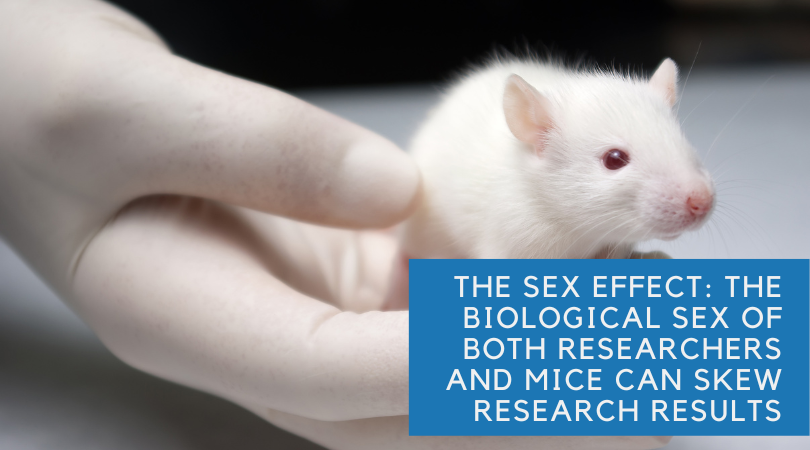The Sex Effect: The Biological Sex of Both Researchers and Mice Can Skew Research Results
Posted on
Does the sex of the researcher or the animal matter in animal research? Increasingly, it’s looking like the answer is yes, at least in some cases. In recent studies, scientists are gaining a better understanding of how biological sex affects research results.
How the Sex of Researchers Affects Lab Animals and Research Results
Mice can tell the sex of the researchers who handle them, and react differently with males versus females. In general, mice tend to be more fearful and stressed around men and more relaxed around women. A study in 2014 found that mice were less susceptible to pain when handled by male researchers due to a heightened stress response, and new research from the University of Maryland School of Medicine confirms that effect.

When testing the antidepressant effects of ketamine on mice, researchers found that the mice reacted differently depending on whether a male or female researcher conducted the experiment.
The team had seen previous research where experimental results seemed to have been influenced by the sex of the researcher and wanted to test the effect.
In their experiment, in which they administered ketamine to mice and measured their level of depression by how long they would swim when placed in a tank, the mice swam longer when the drug was administered by a male researcher.
When the mice were exposed to the scent of human males, their stress levels increased, triggering the brain to release a hormone called corticotropin-releasing factor (CRF), which made the mice receptive to the antidepressant effects of the ketamine.
When female researchers administered the ketamine, the brains of the mice did not release CRF. When female researchers administered the ketamine along with a dose of CRF, the mice reacted as they had with the male researchers.
The discovery may enable scientists to improve the antidepressant effects of ketamine by adding a dose of a chemical that mimics CRF.
Important Differences Between Female and Male Mice
The sex of the mice also matters, and a growing number of researchers are including both male and female mice in their experiments to prevent their results from being skewed by single-sex tests.
In 2014, the National Institutes of Health (NIH) issued a requirement that grant applicants use both male and female animals in their laboratory work, but a review of recent research shows that the scientific community continues to be slow in adopting the policy.
Not only do male and female mice, like humans, respond differently to different drugs, each sex has specific hormones and genes that could affect research outcomes. And while research with mice can’t always be duplicated in humans, using both sexes of mice in research could lead to a better understanding of how and why some diseases and conditions affect men and women differently, including COVID-19, stroke, and some autoimmune diseases.
According to a new study from the University of Tennessee, sex may even be directly related to the lifespan of mice, and potentially humans.
In the study, researchers used data from 3,000 mice that was gathered in 2003 to determine whether diet changes could increase lifespan. By studying the DNA of the animals, they were able to identify several genes associated with longer life in both female and male mice. The specific genetic determinants of longevity were different for each, indicating that sex is an important factor.
Traditionally, researchers would use only male mice, but studies using exclusively female mice have already yielded important discoveries that could extend to human women.
A study conducted at UCLA with female mice has uncovered important new information about menopause-related memory and cognitive deficits. In mouse models of menopause, researchers found significant changes in brain activity, which could lead to cognitive changes.
Sex-based differences were also revealed in a study at Case Western Reserve University, where researchers discovered a potential reason why females are more susceptible to Alzheimer’s disease. The team found that female mouse models of Alzheimer’s express higher levels of the enzyme ubiquitin-specific peptidase 11 (USP11), which results in a higher accumulation of tau, a common marker of the disease. The team was able to protect the female mice from tau overproduction by eliminating USP11.
By recognizing how the biological sex of both scientists and subjects affects their research results, researchers may be able to find new treatments for a wide variety of conditions, and tailor them to each sex for maximum effectiveness.